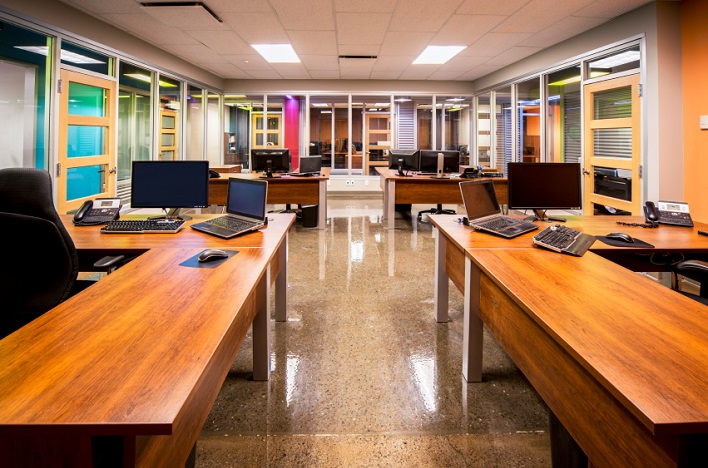To compete for the very best talent, a growing number of Kansas City companies are investing more thought and money into how their workspaces look and function.
Sure, job seekers are interested in salary and benefits. But they also care about the places where they’re going to spend the bulk of their day.
Employees are paying attention to workplace design. They’ve read the Fast Company articles about the amenities at Facebook or Amazon—heck, maybe they’ve even interviewed at those companies. They’ve got higher expectations.
 “We spend so much time of our lives at work,” said Alissa Wehmueller, director of interiors at Kansas City’s Helix Architecture + Design. “Work should be something you really enjoy and a place you like to go.”
“We spend so much time of our lives at work,” said Alissa Wehmueller, director of interiors at Kansas City’s Helix Architecture + Design. “Work should be something you really enjoy and a place you like to go.”
Wehmueller recently talked about better workplace design at an event hosted by TeamKC. TeamKC is an initiative of the Kansas City Area Development Council. It works with more than 175 local companies and a huge network of recruiters to promote Kansas City to potential hires.
There are great local examples of companies using workplace design as a competitive advantage, said Jessica Nelson, TeamKC’s managing director.
For example, she pointed to Sungevity, a solar energy company that opened an office in downtown Kansas City, Mo. If you visit their space, you’ll find bright, neon-orange walls (the company’s signature color), pingpong tables and smaller “pods” where workers can hold smaller meetings or work quietly.
 “They’ve really taken this very corporate space—almost a corporate ‘70s look—and totally changed and turned it upside-down,” Nelson said.
“They’ve really taken this very corporate space—almost a corporate ‘70s look—and totally changed and turned it upside-down,” Nelson said.
So when Sungevity and other companies bring in potential hires, there’s a “wow” factor. Nelson calls it the “epiphany of the visit.” Out-of-town talent might be skeptical about moving to Kansas City, but when they see how things actually look, they can envision themselves living and working here.
Experts say that Gen Xers, Millennials and Gen Y often choose a community and a lifestyle before they pick a job.
So, What Does a Happy, Productive Workplace Look Like?
There are certain all-purpose principles, like maximizing exposure to natural light or, even better, making it possible for workers to go outdoors, Wehmueller said.
But every company and every workplace is different. An open-office plan might be perfect for, say, Google but disastrous for a different company.
“The best thing you can do is take a step back and look at your organization,” Wehmueller said.
What are your goals for the next few years? Do you need an office space that fosters interactions between, say, sales and engineering?
Talk to your team—you know, the people who actually will spend their day in that space. What do they need?
And while you’ll get the best results by working with an expert, there are smaller, lower-cost changes you can make that can still deliver an impact.
Maybe you can make upgrades to a meeting room, the breakroom or some other communal space so that everyone benefits.
“There’s such a sliding scale of what you can do,” Wehmueller said.
Looking to improve your company’s ability to recruit amazing workers? Check out the resources at TeamKC’s website.


